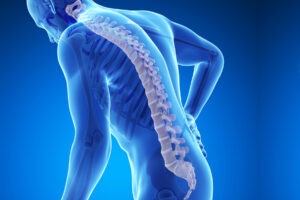A new study published by the journal Osteoporosis International has found that older adults “consume more healthy plant foods and reduce the consumption of animal foods and unhealthy plant foods, which was associated with a lower risk of osteoporosis.”
 Titled Association of plant-based dietary patterns with the risk of osteoporosis in community-dwelling adults over 60 years: a cross-sectional study, the research was conducted by investigators from China Medical University, and it was epublished by the U.S. National Library of Medicine.
Titled Association of plant-based dietary patterns with the risk of osteoporosis in community-dwelling adults over 60 years: a cross-sectional study, the research was conducted by investigators from China Medical University, and it was epublished by the U.S. National Library of Medicine.
The study found that “A higher PDI was associated with higher bone mineral density (BMD) in older adults. In logistic regression models, the highest quartile of PDI and HPDI had a significantly lower risk of osteoporosis than the lowest quartile, whereas UPDI in the highest quartile was associated with a higher risk of osteoporosis.”
There was a dose-response relationship between the three indices and the risk of osteoporosis. Subgroup analysis revealed differences in the relationship between HPDI and the risk of osteoporosis according to gender and age.
Researchers conclude that “Older adults, especially women, consume more healthy plant foods and reduce the consumption of animal foods and unhealthy plant foods, which was associated with a lower risk of osteoporosis.”
More information on this study can be found by clicking here, and its full abstract can be found below.
Abstract
Plant foods are rich in many important micronutrients that are beneficial for bone health. This cross-sectional study of 9613 community-dwelling older adults found that more consumption of healthy plant foods and less consumption of animal foods and unhealthy plant foods were associated with a lower risk of osteoporosis.
Introduction: Osteoporosis,a common chronic disease in older adults, threatens their health. Many nutrients in plant foods are important for preventing osteoporosis. However, the relationship between plant-based dietary patterns and osteoporosis remains unclear. This study aimed to investigate the cross-sectional association between plant-based dietary patterns and osteoporosis in older adults.
Methods: This study was conducted among 9613 community-dwelling older adults in Liaoning Province, China. The effective food frequency questionnaire (FFQ) and plant-based diet index (PDI) were used to evaluate compliance with plant-based dietary patterns. Osteoporosis was defined based on heel ultrasound. We analyzed the association between healthy plant-based diet index (HPDI) and unhealthful plant-based diet index (UPDI) and the risk of osteoporosis.
Results: A higher PDI was associated with higher bone mineral density (BMD) in older adults. In logistic regression models, the highest quartile of PDI and HPDI had a significantly lower risk of osteoporosis than the lowest quartile, whereas UPDI in the highest quartile was associated with a higher risk of osteoporosis. There was a dose-response relationship between the three indices and the risk of osteoporosis. Subgroup analysis revealed differences in the relationship between HPDI and the risk of osteoporosis according to gender and age.
Conclusions: Older adults, especially women, consume more healthy plant foods and reduce the consumption of animal foods and unhealthy plant foods, which was associated with a lower risk of osteoporosis.
